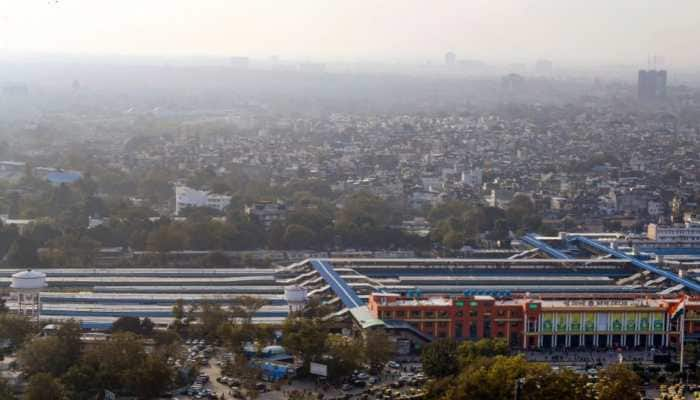NASA's Hubble conducts first atmospheric study of earth-sized exoplanets (Watch)
The findings increase the chances of habitability on two exoplanets - TRAPPIST-1b and TRAPPIST-1c.
Trending Photos
) Imaage credits: NASA/ESA/STScI/J. de Wit (MIT)
Imaage credits: NASA/ESA/STScI/J. de Wit (MIT) New Delhi: Astronomers, using Hubble Space Telescope, have for the first time conducted search for atmospheres around temperate, Earth-sized planets beyond our solar system.
The findings increase the chances of habitability on two exoplanets - TRAPPIST-1b and TRAPPIST-1c.
“The lack of a smothering hydrogen-helium envelope increases the chances for habitability on these planets,” said team member Nikole Lewis of the Space Telescope Science Institute (STScI) in Baltimore. “If they had a significant hydrogen-helium envelope, there is no chance that either one of them could potentially support life because the dense atmosphere would act like a greenhouse.”
They found that the two exoplanets, approximately 40 light-years away, are unlikely to have puffy, hydrogen-dominated atmospheres usually found on gaseous worlds.
As per NASA, TRAPPIST-1b completes a circuit around its red dwarf star in 1.5 days and TRAPPIST-1c in 2.4 days. The planets are between 20 and 100 times closer to their star than the Earth is to the sun.
The planets orbit a red dwarf star at least 500 million years old, in the constellation of Aquarius.
Video credit: NASA Goddard/YouTube
The team of scientists, led by Julien de Wit of the Massachusetts Institute of Technology in Cambridge, Massachusetts, observed the planets in near-infrared light using Hubble’s Wide Field Camera 3.
“These initial Hubble observations are a promising first step in learning more about these nearby worlds, whether they could be rocky like Earth, and whether they could sustain life,” says Geoff Yoder, acting associate administrator for NASA’s Science Mission Directorate in Washington. “This is an exciting time for NASA and exoplanet research.”
Taking advantage of a rare simultaneous transit on May 4, when both planets crossed the face of their star within minutes of each other, astronomers measureed starlight as it filtered through any existing atmosphere.
This double-transit, which occurs only every two years, provided a combined signal that offered simultaneous indicators of the atmospheric characters of the planets, says NASA.
“With more data, we could perhaps detect methane or see water features in the atmospheres, which would give us estimates of the depth of the atmospheres,” said Hannah Wakeford, a researcher at NASA’s Goddard Space Flight Center in Greenbelt, Maryland.
The researchers hope to use Hubble to conduct follow-up observations to search for thinner atmospheres, composed of elements heavier than hydrogen, like those of Earth and Venus.
These Earth-sized planets are the first worlds that astronomers can study in detail with current and planned telescopes to determine whether they are suitable for life,” said de Wit.
The research has been published in the July 20 issue of the journal Nature.
Stay informed on all the latest news, real-time breaking news updates, and follow all the important headlines in india news and world News on Zee News.
Live Tv







)
)
)
)
)
)
)
)
)
)
